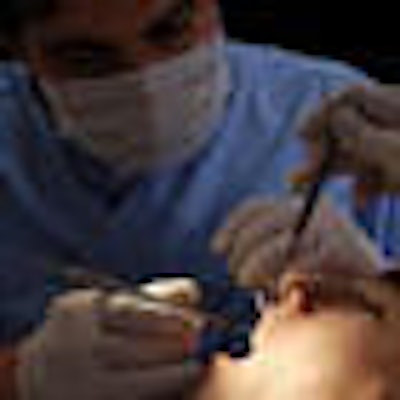
Some dental dilemmas are best solved in everyday practices rather than academic settings. This is what makes practice-based research so invaluable, according to a panel of experts at the recent ADA meeting.
The idea is to have dental practitioners conduct clinically relevant research studies in their offices with real patients, thereby better answering the questions that practitioners face daily in the routine care of their patients.
This was the key reason behind three National Institute of Dental and Craniofacial Research (NIDCR) grants totaling $75 million in 2005. The grants established three regional dental practice-based research networks (PBRNs): the Practitioners Engaged in Applied Research and Learning (PEARL) Network on the East Coast, which is overseen by New York University; a network in the South coordinated jointly by the University of Alabama at Birmingham and the University of Florida in Gainesville; and the Northwest Practice-Based Research Collaborative in Evidence-Based Dentistry (PRECEDENT) network operated by the University of Washington in Seattle and the Oregon Health and Science University in Portland.
At the ADA session, Donald DeNucci, D.D.S., M.S., the PBRN program director at the NIDCR, offered these reasons for establishing the networks:
- To answer questions facing the general dental practitioners in the routine care of their patients on a daily basis.
- To gather information that would strengthen the knowledge base for making clinical decisions.
- To establish a flexible and adaptable electronic network or platform so that data could be shared with medical PBRNs and other entities that provide healthcare.
Clinical studies provide the best evidence for guiding practice, but clinical trial results often don't match what practitioners are seeing on a daily basis, said Jack Ferracane, Ph.D., the network chair and co-director of the Northwest PRECEDENT network. The idea was to try and accumulate information in the office under the conditions of a normal private practice, with the same time constraints and patient situations.
Participating clinicians have the opportunity to be an investigator for a research project, experience professional growth, make a contribution to evidence-based knowledge, get a faculty appointment at one of the universities, and give back to the profession, he explained. They also get free continuing education (CE) credits for attending annual meetings.
And how does this work affect their practice?
Pilot studies are conducted in a few practices to get a sense of the time it takes for a practitioner and office staff to conduct them, Ferracane said. The practice is compensated for its time accordingly.
"We promise practitioners that this won't cost them," he said.
During the training process, dentists complete an online Health Insurance Portability and Accountability Act (HIPAA)-compliance program. They also undergo an intensive training course in the principles of good clinical research by attending an all-day session or watching a four-hour training video, followed by a two-hour satellite discussion.
The Northwest PRECEDENT network is currently working on several studies, including a survey of oral health conditions, a case-control study of osteonecrosis of the jaw, a study on computer-assisted relaxation learning for dental offices, an assessment on the outcomes of cracked teeth, a survey of dentin hypersensitivity treatment in general practices, and more.
Bruce Burton, D.M.D., a practitioner investigator with the Northwest practitioner network, said he has found it to be a rewarding experience that has minimal impact on his time.
He talked about his experience with two studies: the survey of oral health conditions and the study on computer-assisted relaxation learning for dental offices.
For the first study, three staff members were needed: one to contact patients to get permission, one to gather data from the patient's chart and help him with the exam, and another to compile and submit the data.
"The exam did not take much longer than my usual exam, as my chart already had a lot of the same questions," Dr. Burton said.
The second study looked at the effectiveness of a computer program called CARL (computer-assisted relaxation learning) that patients can use on their own time and at their own pace to eliminate or reduce needle fear.
"A patient can come in and sit in a spare room, and the computer does the work for you," Dr. Burton said. "I like this study because, so far, several people have been able to relax enough to get an injection. It is also an opportunity to offer anxious patients a program that can help."
Dr. Burton said that his staff really enjoys being part of the process because they feel like they are making a valuable contribution to science. Also, when patients hear that they conduct research, it creates the impression of a cutting-edge practice.
The bottom line: "It has been so rewarding that I would do it whether I was paid or not," Dr. Burton said.



















